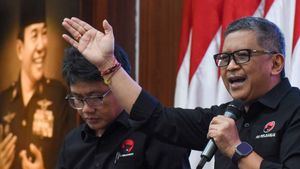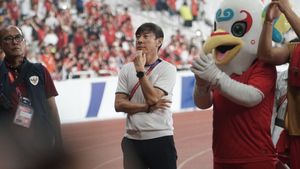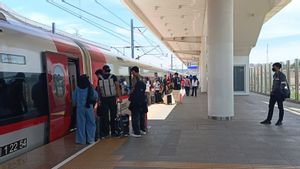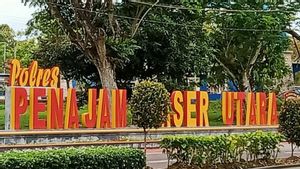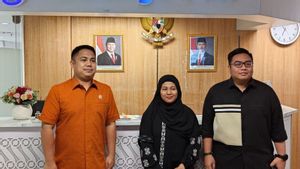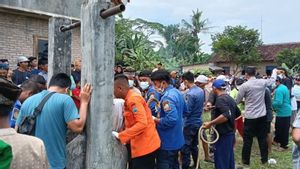JAKARTA - The Ministry of Energy and Mineral Resources (ESDM) in collaboration with the International Energy Agency (IEA) formulated a roadmap for Indonesia's energy sector Net Zero Emission in 2060. This collaboration is a manifestation of Indonesia's commitment as part of the global community in climate change mitigation actions.
"My high appreciation to the IEA for the collaboration in making appropriate mitigation action tracing is not only in the electricity sector, but also in the demand sector," said ESDM Minister Arifin Tasrif in an official statement, Saturday, September 3.
The results of Indonesia and the IEA modeling, continued Arifin, have succeeded in identifying several mitigation measures, including massive development of renewable energy with a focus on solar, hydro and geothermal, gradual termination (phase down) of Coal Power Plants (PLTU), use of low-emission technology such as the development of super grids to improve connectivity and Carbon, Capture, Utilization, adn Storage (CCS/CCUS), conversion of electric vehicles and the application of energy efficiency equipment for the industrial sector, transportation and building as well as the use of new energy such as nuclear, hydrogen, and ammonia.
In addition, the government confirmed that additional power plants after 2030 only came from new and renewable energy plants (EBT).
"Starting in 2035, we will be dominated by Varible Renewable Energy (VRE), while nuclear power plants will enter the system by 2049," he explained.
According to Arifin, technology and innovation are common challenges in realizing clean energy that is more accessible and affordable.
"Cooperation and technology solutions are very important for decarbonizing the electricity sector and industry. We need to prioritize research, development, and application for next-generation technologies," he said.
Arifin also admitted that international support and cooperation were needed. "Everyone has access to participate in green energy development. For this reason, the availability and access to technology and financing must be wide open for all countries," he said.
On the other hand, IEA Executive Director Fatih Bureaul said Indonesia needed to ensure policy reform to pave the way for transition to renewable energy and reduce dependence on coal. The existence of this NZE map is part of the goal of achieving net zero emissions by 2060.
"Indonesia has the opportunity to show the world that for countries that rely heavily on fossil fuel exports, the path to net zero emissions is not only feasible but also provides benefits," Fatih explained at the same time.
Based on the IEA study, said Fatih, Indonesia needs almost three times the energy investment in 2030 from the current level. In the latest IEA report, The IEA's Energy Sector Roadmap to Net Zero Emissions in Indonesia said there was an additional investment of USD 8 billion per year.
According to Fatih, mobilizing additional financing also depends on international financial support through the Funding program for a Fair International Energy Transition Partnership (JETP). "I ask Indonesia's international partners to mobilize clean energy financing through JETP and ensure technology transfer. The results will bring great benefits to Indonesia and the world," said Fatih.
One of the potential renewable energy sources that the IEA is paying attention to is solar power. "Surya is the biggest opportunity in Indonesia. We hope that it will be implemented more, have competitive (prices), and a promising project," Fatih hoped.
Meanwhile, Director of Energy New, Renewable, and Energy Conservation (EBTKE) Dadan Kusdiana emphasized the existence of the NZE roadmap as a result of Indonesia's collaboration - NZE will be used as input material to complete the NZE Indonesia roadmap at COP26 in Glasgow. "We want to ensure that our roadmap can run well, it can be carried out from the principle of competitiveness. We The tanside process does not reduce Indonesia's competitiveness," concluded Dadan.
The English, Chinese, Japanese, Arabic, and French versions are automatically generated by the AI. So there may still be inaccuracies in translating, please always see Indonesian as our main language. (system supported by DigitalSiber.id)



